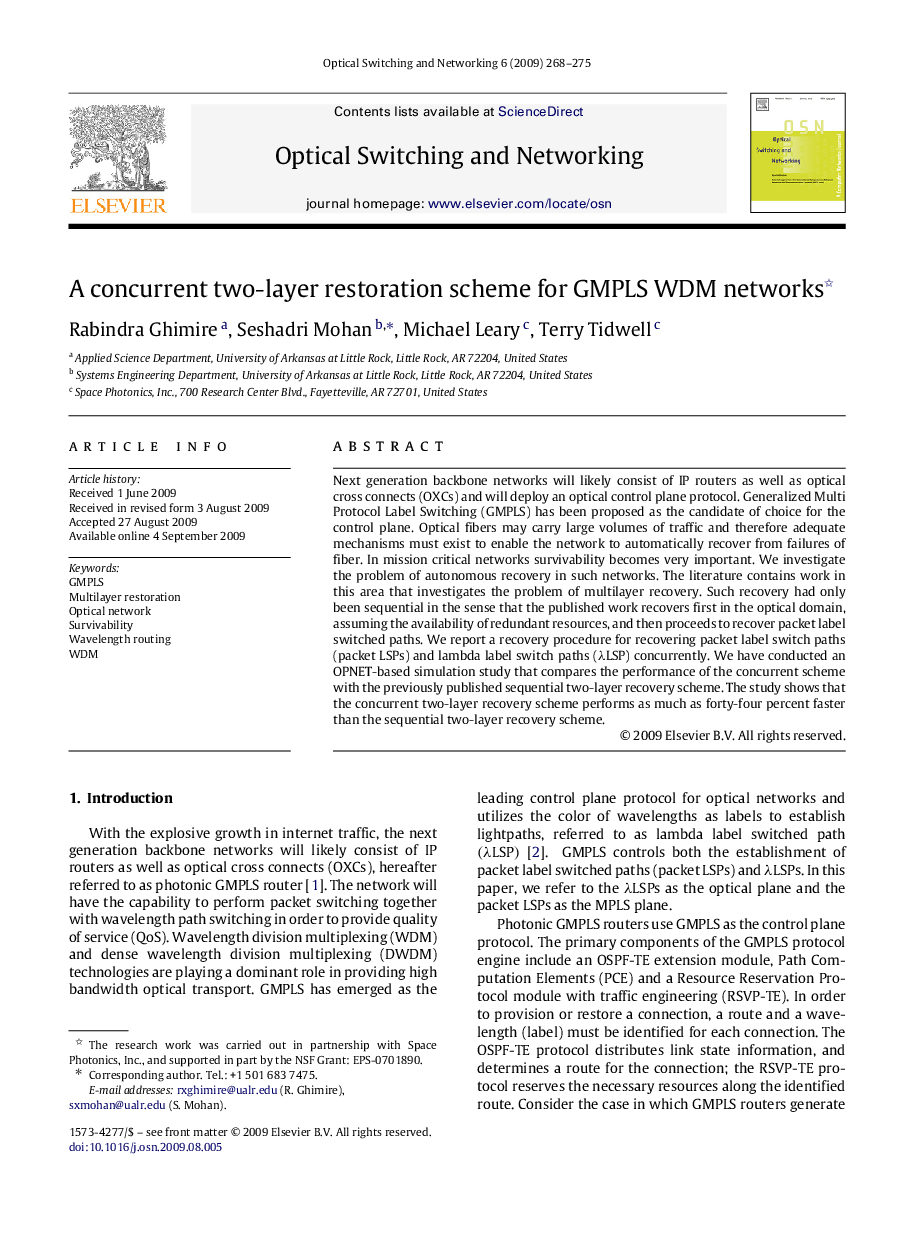| Article ID | Journal | Published Year | Pages | File Type |
|---|---|---|---|---|
| 462756 | Optical Switching and Networking | 2009 | 8 Pages |
Next generation backbone networks will likely consist of IP routers as well as optical cross connects (OXCs) and will deploy an optical control plane protocol. Generalized Multi Protocol Label Switching (GMPLS) has been proposed as the candidate of choice for the control plane. Optical fibers may carry large volumes of traffic and therefore adequate mechanisms must exist to enable the network to automatically recover from failures of fiber. In mission critical networks survivability becomes very important. We investigate the problem of autonomous recovery in such networks. The literature contains work in this area that investigates the problem of multilayer recovery. Such recovery had only been sequential in the sense that the published work recovers first in the optical domain, assuming the availability of redundant resources, and then proceeds to recover packet label switched paths. We report a recovery procedure for recovering packet label switch paths (packet LSPs) and lambda label switch paths (λλLSP) concurrently. We have conducted an OPNET-based simulation study that compares the performance of the concurrent scheme with the previously published sequential two-layer recovery scheme. The study shows that the concurrent two-layer recovery scheme performs as much as forty-four percent faster than the sequential two-layer recovery scheme.
